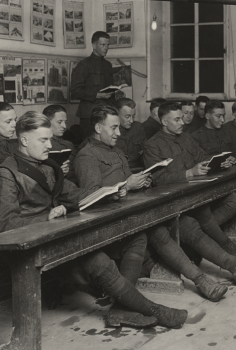When did World War I begin? What countries were involved? When did it end? This page provides a brief summary of the important events and battles of the war, from the start of the conflict through the peace treaties.
To learn more, please explore our Interactive WWI Timeline, which provides an in-depth look into the chronology of the war, using photographs, original video footage and audio recordings.

June 28, 1914
Austro-Hungarian Archduke Franz Ferdinand and his wife, Sophie Chotek, are assassinated by Bosnian Serb nationalist Gavrilo Princip. Austria suspects Serbia is responsible.

July 28, 1914
Austria-Hungary declares war on Serbia.

August 1914
Germany declares war on Russia, France and Belgium.
Britain declares war on Germany.
Austria-Hungary declares war on Russia.
France and Britain declare war on Austria-Hungary.
Japan declares war on Germany.
Austria-Hungary declares war on Belgium.
The United States declares its neutrality.
Britain declares war on Germany.
Austria-Hungary declares war on Russia.
France and Britain declare war on Austria-Hungary.
Japan declares war on Germany.
Austria-Hungary declares war on Belgium.
The United States declares its neutrality.

September 4, 1914
Germany invades Belgium, but is stopped at the First Battle of the Marne. The Schlieffen Plan fails.

October 31, 1914
First Battle of Ypres: Attempting to outflank each other, Allied and German troops were unable to win a decisive victory, leading to the onset of trench warfare.

November 5, 1914
Britain and France declare war on the Ottoman Empire.

January 10, 1915
German zeppelin raids on Great Britain begin, bringing the war home to British civilians.

February 4, 1915
Germany initiates a policy of unrestricted submarine warfare, whereby all merchant ships, including those of neutral countries, would be subject to attack.

April 22-May 25, 1915
Second Battle of Ypres: Germans launch the first successful gas attack in history. By the end of the war, both Allied and Central Powers will have used chemical weapons.

April 25, 1915
British and French troops, including Australians and New Zealanders (ANZAC) land on the Gallipoli peninsula in the Ottoman Empire.

May 7, 1915
German U-boat torpedoes the Lusitania, a British passenger liner. 128 Americans are killed.

May 23, 1915
Italy declares war on Austria-Hungary, entering World War I on the side of the Allies.

September 28, 1915
Allied troops move through Mesopotamia to capture Baghdad from the Ottomans.

October 6, 1915
A combined force of Austro-Hungarians and Germans (and later Bulgarians) invade Serbia. After weeks of stubborn fighting, the Serbian Army was forced to retreat through Montenegro and Albania.

October 7-12, 1915
British Red cross nurse Edith Cavell, who secretly helped hundreds of British, French and Belgian soldiers escape the Germans, is arrested for espionage and executed in Brussels.

February 21, 1916
Battle of Verdun: Hoping to “bleed France white,” the German Army launches a major offensive against the symbolic fortress of Verdun. Fighting will not end until December.

April 22, 1916
Around 20,000 French women and girls are deported from industrial cities like Lille to perform forced agricultural work in other parts of occupied France.

May 16, 1916
Great Britain and France secretly sign the Sykes-Picot Agreement. Assuming they will defeat the Ottoman Empire, they divide the Middle East. France claims Syria and Lebanon. Britain claims Jordan, Iraq, the Gulf states and the Palestine Mandate.

May 31, 1916
Battle of Jutland: In the largest naval battle of the war, Britain’s Royal Navy Grand Fleet and the German Navy’s High Seas Fleet fought to a draw, though both sides claimed victory.

June 5, 1916
Arab nationalists revolt against Ottoman rule in the “Great Arab Rising.”

July 1, 1916
Battle of the Somme: After a seven-day artillery bombardment, Allied troops launch an offensive meant to divert German troops from Verdun. The British suffered around 50,000 casualties on the first day and fighting continued until November.

February 3, 1917
After Germany resumes its campaign of unrestricted submarine warfare, the U.S. severs diplomatic relations with Germany.

March 1, 1917
British intelligence intercepts the Zimmermann Telegram, a secret communication from Germany proposing an alliance with Mexico should the United States enter World War I.

April 1, 1917
Germany sinks the SS Aztec, a U.S. cargo ship bound for France.

April 2,1917
U.S. President Woodrow Wilson delivers a war message to Congress, famously stating that “the world must be made safe for democracy.”

April 6, 1917
Following passage of the war resolution by the Senate and House, the United States is officially at war with the German Empire.

April 16, 1917
Having traveled on a sealed train from Switzerland, Vladimir Lenin returns to Petrograd (St. Petersburg) after a decade of exile to personally lead the Russian Revolution.

May 18, 1917
The U.S. Congress authorizes the Selective Service Act, initiating the first military draft since the Civil War.

May 25, 1917
General John J. Pershing selected as commander of the American Expeditionary Forces.

June 15, 1917
Congress passes the Espionage Act, making it a crime for any person to convey information intended to interfere with the prosecution of the war effort or to promote the success of the country’s enemies.

July 31, 1917
Third Battle of Ypres (Passchendaele): Allied troops, largely those from the British Empire, launch an attack to seize key ridges near Ypres. They achieve victory, but only after months of fighting in horrific conditions and sustaining heavy casualties.

November 2, 1917
Britain issues the Balfour Declaration, a statement of support for the establishment of a Jewish nation in Palestine.

November 7, 1917
Vladimir Lenin and the Bolsheviks assume complete control over the new Soviet Russian state.

December 6, 1917
A French munitions ship collides with a Belgian relief ship resulting in 11,000 casualties.

December 9, 1917
The British capture Jerusalem from the Ottomans.

January 8, 1918
U.S. President Woodrow Wilson outlines his Fourteen Points for peace.

March 3, 1918
Russia and Germany sign the Treaty of Brest-Litovsk, officially removing Russia from World War I.

March 8, 1918
Camp Funston at Fort Riley, Kansas makes the first report of influenza. The disease spreads overseas to the Western Front. Over the next year this “Spanish Influenza" kills 20 million worldwide.

May 28, 1918
Battle of Cantigny: In its first major battle of World War I, American troops captured the town of Cantigny, depriving the Germans of an important observation point.

July 17, 1918
Bolsheviks murder the former czar of Russia, Nicholas II, and his family.

July 18-August 6, 1918
Aisne-Marne Offensive: Marks a major turning point in the fighting on the Western Front. Two days after its conclusion, the British attack at Amiens is called the “Black Day of the German Army.”

September 12-15, 1918
Battle of Saint-Mihiel: First major offensive operation by General John J. Pershing’s American Expeditionary Forces.

September 26, 1918
Meuse-Argonne Offensive: After a short artillery bombardment, American and French troops advance toward German positions in the Argonne Forest and along the Meuse River. The largest offensive in U.S. history, it played a major role in bringing about an end to the war.

October 24-November 3, 1918
Battle of Vittorio Veneto: Austro-Hungarian forces are severely defeated by the Italian Army, ending the war on the Italian Front and ushering in the final dissolution of the Austro-Hungarian Empire.

November 9, 1918
German Kaiser Wilhelm II abdicates and flees to Holland. German Republic (later the Weimar Republic) proclaimed.

November 11, 1918
Having been given 72 hours to agree to Allied demands, Germany signs the armistice. Supreme Allied Commander Marshal Ferdinand Foch orders that all hostilities on the Western Front cease at 11 a.m. Paris time.

December 1, 1918
Allied troops move into Germany and begin occupation.

December 1, 1918
Yugoslavia, a kingdom of Serbs, Croats and Slovenes is proclaimed an independent state.

February 14, 1919
At the Paris Peace Conference, Allied nations propose constitution for the League of Nations to promote international cooperation.

June 28, 1919
Germany is forced to sign the Treaty of Versailles. Germany cedes Alsace-Lorraine to France, recognizes Belgian sovereignty, disarms and agrees to pay war reparations. U.S. Senate refuses to ratify the Treaty of Versailles, thus preventing the country from joining the League of Nations.

August 10, 1920
The Treaty of Sevres officially ends the war between the Allies and the Ottoman Empire and marks the beginning of the latter’s partitioning. Only the territory that becomes Turkey is independent of British and French control.








